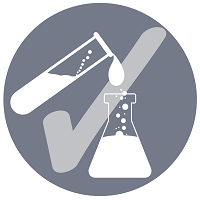Back
Formulation and Delivery – Chemical
Session: Hot Topic: Classification Systems in Formulation Development Strategies
Developability Classification System (DCS)-A Paradigm Shift in Formulation Development Strategies
Wednesday, October 19, 2022
3:20 PM – 3:40 PM ET
Location: 153 BC

James M. Butler, Dr.
Senior Fellow
GlaxoSmithKline (GSK)
Hot Topic Speaker(s)
Many lead compounds in modern drug discovery pipelines are lipophilic with low aqueous solubility, and therefore display solubility-limited or dissolution limited absorption. Current product development programmes therefore require the use of enabling technologies to transform these challenging molecules to viable commercial products. This in turn has a significant bearing on timelines and project costs. An emerging challenge in the pharma industry involves adapting traditional product development approaches to develop novel strategies and tools to mitigate some of these risks and help support rational formulation development.
The rational use of biopharmaceutical tools at various stages of drug development is extremely valuable to maximise the bioavailability of successful products and in this regard these advanced classification systems have brought a fundamental shift in current drug development. The developability classification system (DCS) offers a valuable framework that can help predict the critical risks and challenges of developing an oral formulation. Although the DCS classification system is based on the basic principles of BCS, it is designed to have a greater focus on the drug developability and human in vivo performance of drug products and hence significantly aids in risk mitigation in early product development. For instance, the use of biorelevant media solubility as a key input enables a more in-vivo relevant assessment for highly lipophillic drugs, whilst the calculation of solubility-limited absorbable dose i.e. SLAD emphasizes on the prediction of extent rather than the rate of oral absorption; and the dissolution rate is projected as a surrogate for target drug particle size rather than the dose/solubility ratio. The DCS based assessments, therefore, can help in the identification of critical absorption factors at an early stage of a program.
In summary, by understanding the drivers of poor solubility of a drug, formulation efforts can be focused on the optimal formulation techniques to provide meaningful improvements in in-vivo performance, and at the same time, avoiding the risk of jumping to overly complex formulations which may add an unnecessary time and cost to the drug development process.
This presentation aims at providing a platform to discuss the real- time industrial applications of the DCS system and to help the exchange of ideas to move this fundamental science further. Experts from industry would introduce the current state of knowledge (including industry case study examples) to demonstrate how the effective use of these data driven approaches at an early stage is a key to successful formulation development, especially in case complex class II/IV compounds.
The rational use of biopharmaceutical tools at various stages of drug development is extremely valuable to maximise the bioavailability of successful products and in this regard these advanced classification systems have brought a fundamental shift in current drug development. The developability classification system (DCS) offers a valuable framework that can help predict the critical risks and challenges of developing an oral formulation. Although the DCS classification system is based on the basic principles of BCS, it is designed to have a greater focus on the drug developability and human in vivo performance of drug products and hence significantly aids in risk mitigation in early product development. For instance, the use of biorelevant media solubility as a key input enables a more in-vivo relevant assessment for highly lipophillic drugs, whilst the calculation of solubility-limited absorbable dose i.e. SLAD emphasizes on the prediction of extent rather than the rate of oral absorption; and the dissolution rate is projected as a surrogate for target drug particle size rather than the dose/solubility ratio. The DCS based assessments, therefore, can help in the identification of critical absorption factors at an early stage of a program.
In summary, by understanding the drivers of poor solubility of a drug, formulation efforts can be focused on the optimal formulation techniques to provide meaningful improvements in in-vivo performance, and at the same time, avoiding the risk of jumping to overly complex formulations which may add an unnecessary time and cost to the drug development process.
This presentation aims at providing a platform to discuss the real- time industrial applications of the DCS system and to help the exchange of ideas to move this fundamental science further. Experts from industry would introduce the current state of knowledge (including industry case study examples) to demonstrate how the effective use of these data driven approaches at an early stage is a key to successful formulation development, especially in case complex class II/IV compounds.
Learning Objectives:
- To demonstrate how the effective use of the DCS and related concepts at an early stage is a key to successful formulation development, especially in case complex class II/IV compounds
- To highlight the current state of knowledge, discuss successful case studies and challenges therein to achieve a general consensus among pharmaceutical scientists.
- To discuss the real- time industrial applications of the DCS system and to help the exchange of ideas to move this important area of pharmaceutical science forward to maximise benefit to new drug development.


